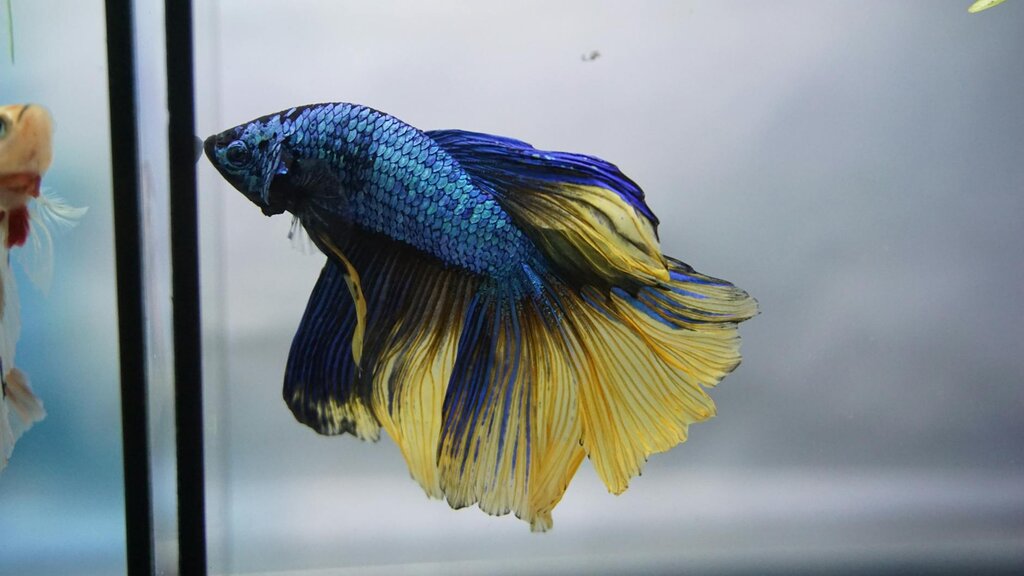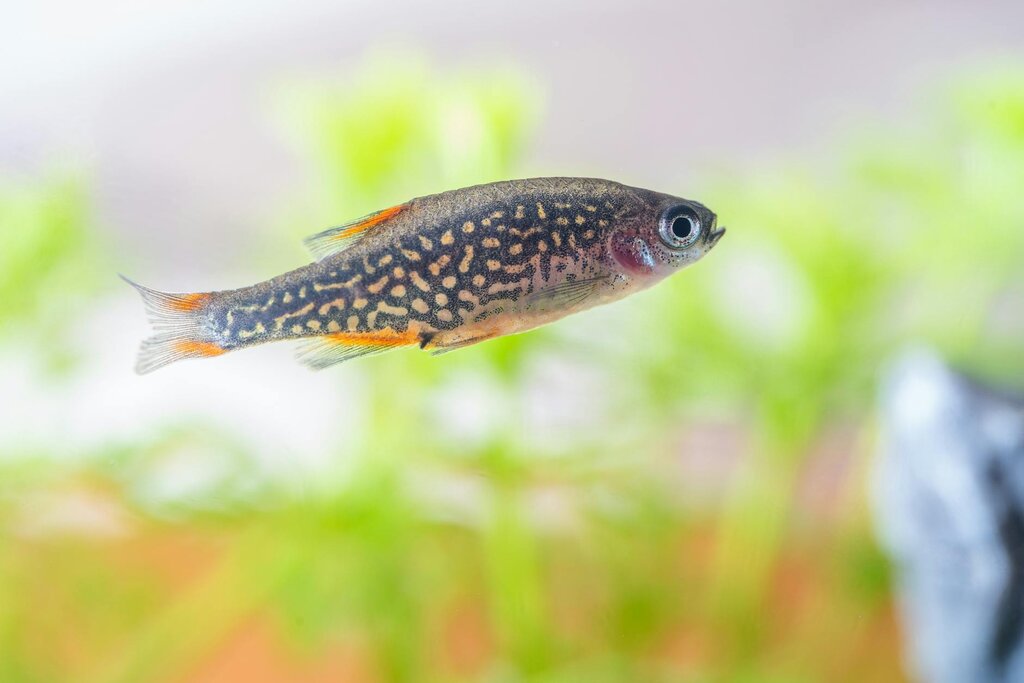Last Updated: 01/10/2025
Best Fish for Small Aquariums
Thinking of starting a small aquarium? Our vet's guide helps you choose the right inhabitants, from bettas to snails. Learn the key rules of nano tanks, including water quality and correct stocking levels, to create a happy and healthy aquatic world.
Author: Dr Nicole Wynne BSc BVMS MANZCVS (Unusual Pets)
Reading Time: 5 minutes - short read
Small aquariums are big on fun, offering the joy of a fish tank without the space and commitment of a huge 100-litre setup. While they might be small, the same rules of responsible fishkeeping apply. It's crucial not to overstock your tank and to have a quality filtration system to maintain water quality.
To prevent welfare issues and keep the water clean, a tank of at least 18 litres is the recommended minimum, even if you only plan on housing one fish.
Here are some of the best types of fish and aquatic critters suitable for small aquariums.
Siamese fighting fish: A colourful centrepiece

These beautiful, unique fish are known for being a bit antisocial, but they can do well in the right community tank!
- Tank size: A common myth is that bettas thrive in tiny bowls. For a single betta to be happy and healthy, you need a filtered aquarium of at least 18 litres.
- Tank mates: In an 18-litre tank, it's best to stick to invertebrate companions like shrimp and snails. For larger tanks, you could consider peaceful fish like neon tetras or Corydoras.
- Environment: Ensure there are plenty of plants and aquarium furniture to provide shelter and break up their line of sight, which helps reduce stress.
For more information, take a read through our Siamese Fighting Fish Care Guide.
The peaceful Platy: Easy to keep and colourful
These little fish come in many different varieties, are easy to feed, and are simple to maintain.
- Livebearers: Platies give birth to live young, so keep in mind that you may end up with more fish than you started with!
- Compatibility: For multi-species tanks, it's best to choose standard platies. Long-tailed varieties can sometimes get their tails nibbled by other fish.
Glass and ghost shrimp: The clean-up crew
These adorable tiny shrimp are not only great to look at, but they also act as a clean-up crew for your tank!
- Low maintenance: They help keep the tank clean by eating any leftover food, algae, and detritus (decaying matter).
- Housing: When housed with fish, ensure they have lots of nooks and crannies on the aquarium bottom to hide in.
Cherry shrimp: Adding a vibrant splash of colour
These striking little shrimp can be more challenging to keep than ghost shrimp but are supremely rewarding due to their vibrant colours.
- Benefits: Like other small freshwater shrimp, they can help with tank maintenance by eating algae and other detritus.
- Diet: They will also require supplementary feeding with high-quality algae wafers.
Zebra danios: A hardy choice for beginners

Zebra danios are cute little fish with their pyjama-like stripes and make excellent additions to a small tank.
- Hardiness: These hardy fish do well in small tanks and tolerate a wide range of temperatures and water pH levels.
- Environment: They are most comfortable when they have plenty of vegetation and furniture to hide in.
Malaysian trumpet snails: Plant-safe algae eaters
These hardy little snails are prolific due to a very cool method of reproduction: parthenogenesis (reproducing without a mate).
- Population: Because they reproduce so easily, their numbers require monitoring to ensure they don’t overrun the tank.
- Plant safe: They’re a great snail option as they feed primarily on algae and are less likely to damage aquarium plants.
Nerite snails: The ultimate algae-eating snail
These beautiful snails come in a wide range of colours and shell patterns - one variety even has a horned shell!
- Easy care: They are a low-maintenance species and are fantastic little algae eaters.
- Lifespan: Nerite snails can live for up to two years.
- Temperament: They are peaceful critters that get along well with other tank mates.
FAQs
Stocking a small aquarium is an exciting first step into a rewarding hobby. Whether you choose a stunning betta, a zippy school of danios, or a helpful crew of shrimp and snails, the key to success is creating a healthy and stable environment.
By respecting minimum tank sizes, maintaining water quality, and avoiding overcrowding, you'll be well on your way to enjoying a thriving miniature aquatic world. Happy fishkeeping!
Articles recommended for you
Our vet authored guide to the benefits of feeding your dog fresh food plus tips and advice for introducing it into their regular menu.
See our guide to protecting your pet from parasites from our vet team.
Thinking of getting a fish? Check out our guide for setting up a tank and home care tips!
Looking to understand horse feeds better? This comprehensive guide covers feeding recommendations for horses of all ages and disciplines.
Does your pet suffer from anxiety? Check out our Vet-guide for treatment options to help your pet.
History
Our experts continually monitor the health and wellness space and we update our articles when new information becomes available.
Thu 2 Oct 2025
Edited by Dr Gillian Hill BVSc (Hons)Dr Nicole Wynne BSc BVMS MANZCVS (Unusual Pets)
Veterinarian, MANZCVS (Unusual Pets)
Dr. Nicole graduated from Murdoch University in WA in 2014, and immediately started working in exotics-only practice. She was also one of the few vets in Australia that would routinely see venomous snakes ranging from death adders to tiger snakes. Although Dr. Nicole enjoys seeing all exotic pets, her absolute favourite are rabbits. She passed her Australian and New Zealand College of Veterinary Scientists Membership (MANZCVS) exam in unusual and exotic pets in 2021.

